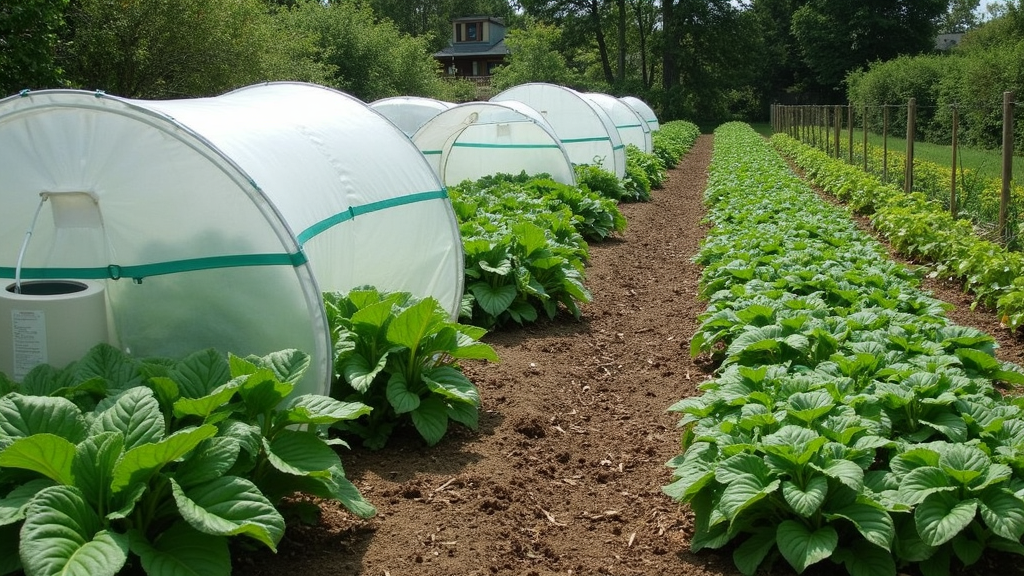Pest management in vegetable gardens can feel like a neverending job, especially when you’re aiming for a healthy harvest. I’ve run into more than a fair share of bugs and critters in my own garden, so I know how important it is to sort out a practical pest control plan. With so many methods, products, and natural tricks out there, figuring out what works for your garden can make all the difference between thriving crops and bugeaten veggies. Here, I’ll walk you through the pest control options I’ve tried, what’s worth considering, and how to keep your garden productive without causing harm to pollinators or your family.

Understanding Garden Pests
Dealing with pests in the vegetable garden isn’t just about getting rid of all bugs. Some insects are actually beneficial for your plants, helping with pollination or handling the real troublemakers. In my experience, learning to spot which ones you want to keep and which ones you need to control is really important.
Common pests include aphids, caterpillars, slugs, snails, beetles, and whiteflies. Each comes with its own quirks. Aphids, for example, multiply fast and suck the sap right out of your plants. Caterpillars can chew through leaves overnight. If you want a helpful chart or guide, the University of Minnesota Extension has a pretty handy breakdown of popular veggie garden pests and what to look for.
Beyond the bugs, there are also issues like fungal infections and animal invaders (like rabbits or squirrels), but the methods I’ll share focus mainly on insect control.
Preventive Methods You Can Start With
Preventing pest problems is the easiest way to go, and I always put effort into these basic steps. When your plants are healthy and your garden is balanced, you’ll naturally see fewer pest outbreaks.
- Rotate Crops: Changing what you plant in each bed every year stops pests from settling in longterm.
- Healthy Soil: Compost and organic matter help plants grow strong, which means better resistance to pests.
- Remove Debris: Old leaves and stems attract insects, so keep things tidy, especially at the end of the season.
- Companion Planting: Growing certain plants (like marigolds, basil, or onions) alongside veggies can confuse or repel pests. I’ve found basil works really well next to tomatoes for cutting back on hornworms.
- Physical Barriers: Floating row covers, netting, and garden fabric can physically block pests from getting to your crops.
Most of these methods take less time than constantly reacting to infestations and work for gardens of any size.
Natural and Organic Pest Control
If preventive steps aren’t enough and pests start to do some real damage, I usually move on to natural or organic controls. You don’t have to spray chemicals right away; many organic solutions are easy to find or make at home and won’t harm bees and other helpful critters.
- Handpicking: For big bugs like tomato hornworms or caterpillars, I just pick them off the plants and drop them into soapy water. It’s a bit gross but really effective for small gardens.
- Neem Oil: This plant based oil works against aphids, whiteflies, and more. It interrupts pests’ feeding and life cycles, but you have to cover the leaves well and repeat after rain.
- Insecticidal Soap: Found at most garden centers or easily homemade (mild liquid soap mixed with water), these sprays are great for soft bodied insects. Test first on a leaf to make sure your plant won’t react badly.
- Diatomaceous Earth (DE): I sprinkle a thin layer at the base of plants. DE is a soft powder that damages the exoskeletons of crawling bugs like slugs or beetles. Just make sure to reapply after watering and try not to breathe it in.
- Bacillus thuringiensis (Bt): This is a safe soil bacterium that targets caterpillars when sprayed on leaves. It won’t harm people or pets but should be used only when needed, as it can affect butterfly larvae too.
These natural methods are safe for kids and pets, and I usually see fewer issues with chemical buildup or resistance by pests over time.
Identifying and Managing Problem Spots
Every garden has a few trouble areas. In my garden, the shady, damp spots are caterpillar hot zones; the drier areas are magnets for spider mites. Walking your garden every day or two and checking the undersides of leaves can save you a lot of trouble down the line.
- Look for Damage: Chewed, curled, or yellowing leaves are often the first signs of a problem. Sticky residue is a giveaway for aphids or whiteflies.
- Spot Treatments: When a pest problem is limited to one area, I use targeted treatments instead of spraying the whole garden. For example, spraying only the infested tomato row with neem oil keeps things under control with less effort.
- Encourage Beneficial Insects: Ladybugs, lacewings, and parasitic wasps all feed on popular pests. I usually plant a few patches of alyssum or dill to attract these helpers and avoid using broadspectrum pesticides that could wipe them out.
Practical Chemical Controls
Sometimes, even with the best planning, organic controls just aren’t enough. There are times I’ve reached for chemical controls, but I use them as a last resort and always follow the label to the letter.
- Selective Sprays: Look for products labeled for vegetable gardens, and choose targeted options. Pyrethrin and spinosad are two chemical ingredients approved for organic gardening that work well when used carefully.
- Timing: Spraying at dusk or early morning when pollinators aren’t active helps protect bees. I always remove any nearby blossoms before applying heavyduty sprays.
- Personal Protective Gear: Even with gardensafe sprays, it’s smart to wear gloves and avoid inhaling any mist.
The main thing is to use chemical options thoughtfully so you don’t build up pests’ resistance or harm the good bugs you want to keep around.
Common Challenges and How I Handle Them
- Persistent Pests: Aphids keep coming back every spring no matter what. I blast them off my plants with a hose in the morning and follow up with insecticidal soap every few days.
- Weather Problems: Rain can wash away sprays and make slug problems worse. I switch to barriers like copper tape or nighttime handpicking for slugs until things dry out.
- Mixed Plantings: Gardens with lots of different crops can look great, but pests sometimes hide in dense foliage. I prune plants to keep air moving and make regular visual checks to spot problems early.
It’s not about wiping out every last bug, but keeping populations below a level where they hurt your veggies. Persistence really pays off; most pest outbreaks are temporary if you keep up with your routine.
Extra Tips for a Healthy Vegetable Garden
After years of trial and error, here are a few tricks that have made pest management way easier for me:
- Stagger Plantings: Planting small batches of the same crop a few weeks apart means a single pest outbreak won’t wipe out your entire harvest.
- Reflective Mulch: Silver plastic mulch can confuse aphids and whiteflies, making it tougher for them to find their target plants.
- Keep a Garden Journal: I jot down when and where pest issues show up each season. It helps predict next year’s trouble spots and plan preventive moves.
- Water in the Morning: Watering early gives your plants time to dry off, making conditions less appealing for slugs and fungal growth.
- Check Seedlings Early On: Young plants are especially vulnerable. Within the first weeks of planting, keep an extra eye out for signs of damage or soil disruption from cutworms or beetles. Taking care of an issue early can save an entire season’s crop.
These practical strategies not only minimize damage but also take some of the stress out of gardening when you hit a pesty rough patch.
Frequently Asked Questions
Here are a few questions I get pretty often from friends and neighbors about garden pest control:
Question: Can I use kitchen remedies like garlic spray or hot pepper?
Answer: Homemade sprays from garlic, chili, or even dish soap can slow down some pests, but results can be mixed. I’ve found commercial insecticidal soaps and neem oil much more consistent for real infestations.
Question: How do I keep pets and kids safe in the garden?
Answer: Stick with physical barriers and handpicking, and always wait until any sprays have dried completely before letting kids or animals back into the area.
Question: What should I do if I spot a few bugs but don’t know what they are?
Answer: Snap a photo and check in with your local extension office or a trustworthy gardening website. Many bugs are harmless, and knowing your visitors helps guide your next steps.
Staying Sharp and Enjoying the Process
Managing pests in the vegetable garden can get frustrating, but it’s really just part of growing your own food. Combining a little prevention, organic tactics, and timely spot treatments keeps most trouble in check so your veggies can thrive. Over time, you’ll get to know your garden’s unique cycle and which tweaks make the biggest difference for your space. And it feels pretty great to enjoy a season with beautiful, healthy produce you grew yourself. Gardening is an ongoing adventure, full of new lessons, wins, and the occasional setback. Keeping an eye out pays off in fresh flavors and the satisfaction of overcoming whatever nature throws at you.
